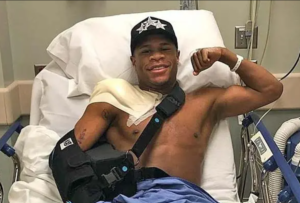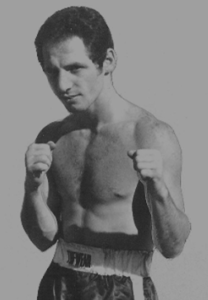Boxing is an intense sport, where athletes are constantly pushing their limits. It takes a commitment to physical and mental strength in order to be successful in the ring. However, if you’ve experienced a shoulder dislocation while boxing, you may find yourself asking if you can ever get back into the ring again. This article will explore the steps required for safe boxing after shoulder dislocation.
Shoulder dislocations are common injuries among boxers due to the repeated impacts of punches against an opponent’s body or head. The shoulder joint is especially vulnerable during these motions and when too much strain is placed on it, it can become dislocated. While these injuries can be painful and debilitating, they don’t have to mean the end of your boxing career.
The key to getting back in the ring after suffering a shoulder dislocation is finding ways to strengthen and protect your shoulder joint so that it’s better prepared for future impacts. This article will provide tips on how to do that safely and effectively, so that you can return to boxing with confidence and without fear of further injury.
Definition Of Shoulder Dislocation
A shoulder dislocation is like an unwelcome visitor that crashes your party. It can cause pain and disruption to the body’s natural balance, leaving you in a state of distress.
Anatomically speaking, a shoulder dislocation occurs when the upper arm bone (humerus) separates from the shoulder blade’s socket (glenoid). The condition usually affects the dominant side of the body, though it can happen on both sides. Symptoms can include intense pain and a noticeable deformity in the shoulder area, as well as difficulty moving or using the arm normally.
Treating a shoulder dislocation typically involves relocating the humerus back into its correct position, followed by physical therapy to help restore range of motion and strength. Moving on to causes of this injury…
Causes Of Shoulder Dislocation
Shoulder dislocations are relatively common injuries, often caused by trauma or falls. It can be a painful and debilitating experience. Understanding the cause of shoulder dislocation is essential for preventing future injury.
- There are two main causes of shoulder dislocation:
- Trauma:
- Falls
- Blows to the shoulder
- Automobile accidents
- Overuse:
- Repetitive motions without proper form
- Heavy lifting without adequate support
- Athletic activities that involve excessive force on the shoulder joint
Once you understand what causes a shoulder dislocation, it’s important to take measures to prevent it from happening again. This means focusing on strengthening your shoulder muscles and learning proper technique when engaging in any activity that could potentially cause injury. With proper care and attention, you can help avoid future injury and enjoy a healthy lifestyle.
Now that you know more about what causes a shoulder dislocation, let’s look at the symptoms associated with this condition so you know when to seek medical advice.
Symptoms Of Shoulder Dislocation
Picture a jigsaw puzzle, its pieces scattered randomly across the table. When you take on the challenge of putting it together, you are presented with an array of seemingly unrelated bits and pieces that require careful consideration in order to complete the task at hand. Shoulder dislocation is much like that puzzle. It is made up of a variety of individual symptoms which, when taken as a whole, can help diagnose and treat the condition.
The most obvious sign of shoulder dislocation is intense pain and swelling in the joint area. The acute pain may be accompanied by a feeling of instability or numbness in the arm area as well as a visible deformity of the joint itself. There may also be an audible “pop” sound when the shoulder dislocates, followed by a great deal of discomfort and mobility issues.
These are only some indicators that something is wrong with your shoulder; any combination or all three could suggest a dislocation has occurred. Other signs include limited range of motion, bruising, and muscle spasms around the affected area. It is important to seek medical attention if any or all these symptoms are present in order to properly diagnose what has happened and begin treatment right away.
By understanding each symptom individually as well as how they work together collectively, it becomes easier to identify what type of injury has occurred and how best to proceed with treatment options such as physical therapy or surgery if necessary. With proper diagnosis and care, one can increase their chances for successful recovery from shoulder dislocation without long-term complications or disability.
Diagnosis And Treatment Of Shoulder Dislocation
When a shoulder dislocation occurs, a doctor must diagnose the injury to determine the extent of the damage. An X-ray is often used to identify bone fractures that may be linked to the injury and help determine if there are any ligament tears involved. The doctor will also examine the affected area and look for signs of swelling or bruising. Depending on the results of these tests, treatment options can range from rest, ice, and physical therapy to surgery in some cases.
For mild shoulder dislocations, it is important that the arm remains immobilized for several weeks in order to let the joint heal properly. During this time period, physical therapy may be recommended in order to strengthen the muscles around the joint and help improve range of motion. In more severe cases involving ligament tears or fractures, surgery may be necessary in order to stabilize the joint and restore normal function.
After treatment has been completed, it is important that individuals follow their doctor’s advice regarding activities they should avoid such as playing contact sports or lifting heavy objects. These activities could cause further damage or cause a recurrence of symptoms. With proper precautions taken, individuals can make a full recovery from shoulder dislocation and enjoy an active lifestyle once again. From here we’ll discuss the risks associated with boxing after shoulder dislocation.
Risks Associated With Boxing After Shoulder Dislocation
There is a popular belief that boxing after a shoulder dislocation will increase the risk of further injury. However, research suggests that this may not necessarily be the case. In fact, recent studies have found that contact sports like boxing can help athletes recover from shoulder dislocations and improve their shoulder strength.
Nevertheless, there are still some risks associated with boxing after a shoulder dislocation. For instance, if an athlete returns to the sport too soon or without proper rehabilitation and strengthening exercises, it could lead to long-term damage in the joint or even permanent disability. It is also possible for an athlete to re-dislocate their shoulder if they don’t follow proper technique and safety guidelines when boxing.
Therefore, it is important for athletes who have experienced a shoulder dislocation to ensure they receive adequate medical care and rehabilitation before returning to any contact sport like boxing. This will help them reduce the risk of further injury and ensure they experience a safe return to their chosen activity. With this knowledge in hand, one can feel confident about moving on to recommended exercises to strengthen the shoulder after dislocation.
Recommended Exercises To Strengthen The Shoulder After Dislocation
It is important to begin a rehabilitation program soon after the shoulder has been dislocated in order to return to normal function and reduce the risk of recurrent injury. Strengthening exercises are an integral part of recovery, helping to restore range of motion as well as strength in the shoulder. Here are some recommended exercises that can help you strengthen your shoulder:
- Pendulum swings: Stand near a support (e.g., barre or door frame) and let your affected arm hang down while keeping it relaxed. Move your arm in circles, gradually increasing the range of motion, at least 10 times per direction.
- Shoulder external rotation: While standing or seated with an exercise band around both wrists, press your arms outward against the band’s resistance for 10-12 repetitions on each side.
- Wall slides: Stand with your back against a wall and place both arms in a 90-degree angle position at your sides. Slowly slide both arms up above your head and back down again, repeating 10 times.
- Bent-over rows: With a dumbbell or exercise band in one hand, bend over from the hips so that your upper body is parallel with the floor. Keeping your elbow close to the body, pull the weight up towards chest level for 8-10 repetitions before switching sides.
- Reverse flys: Stand facing away from a bench or chair with a dumbbell in each hand. Bend forward slightly so that your torso is almost parallel to the floor and raise both arms outwards until they are level with shoulders before slowly lowering them again for 8-10 repetitions on each side.
Performing these exercises regularly will help build strength and stability around your shoulder joint which will not only reduce pain but also improve performance when returning to activities like boxing after recovery from shoulder dislocation. As you progress through rehabilitation it is important to increase resistance gradually while maintaining good form throughout all movements – this will help prevent further injury while working towards full recovery of shoulder function.
Return To Boxing After Recovery From Shoulder Dislocation
Returning to boxing after a shoulder dislocation can be like taking a long and winding road. It may be filled with obstacles, feel daunting, and require patience and resilience to get through. On this journey, the boxer must learn to trust their body once again and find the strength to keep going.
The first step back in the ring is all about listening to your body. After an injury like a shoulder dislocation, it’s important to remember that recovery takes time. Taking small steps towards progress is key; every improvement needs to be acknowledged and celebrated as you move forward. There will also be setbacks along the way – days when progress stalls or regresses – but these should not derail you from reaching your goal.
Once you are physically ready for training, having a coach or physiotherapist involved who can provide tailored advice is essential for ensuring proper technique and form during workouts. This allows for an appropriate progression of skill development while still allowing for sufficient rest between sessions in order for the healing process to continue optimally.
Boxing requires confidence in one’s own abilities; returning after injury means rebuilding that trust in yourself. Having a plan in place that sets out achievable goals over time and ensuring adequate rest periods along the way will help give structure and guidance on this path back into the ring which, with dedication and determination, leads eventually leads back home.
Conclusion
In conclusion, recovering from a shoulder dislocation can be a long and difficult journey, but with proper care it is possible to return to boxing. It’s important to recognize the risks associated with returning to boxing after a shoulder dislocation, and exercise caution when engaging in any physical activity. Taking it slow and gradually building up strength through recommended exercises can help minimize the risk of reinjury.
It’s easy to get impatient when trying to rehabilitate an injury, but rushing back into the ring too soon could prove disastrous. As they say, “Slow and steady wins the race”. With patience and dedication, you can make sure that your shoulder is strong enough for you to safely return to boxing without risking another dislocation or further damage.
Ultimately, everyone recovers differently, so it’s important to listen to your body and take care of yourself as you work towards getting back in the ring again. With hard work and careful attention, you can ensure that your shoulder is strong enough for you to safely return to boxing after a shoulder dislocation.




